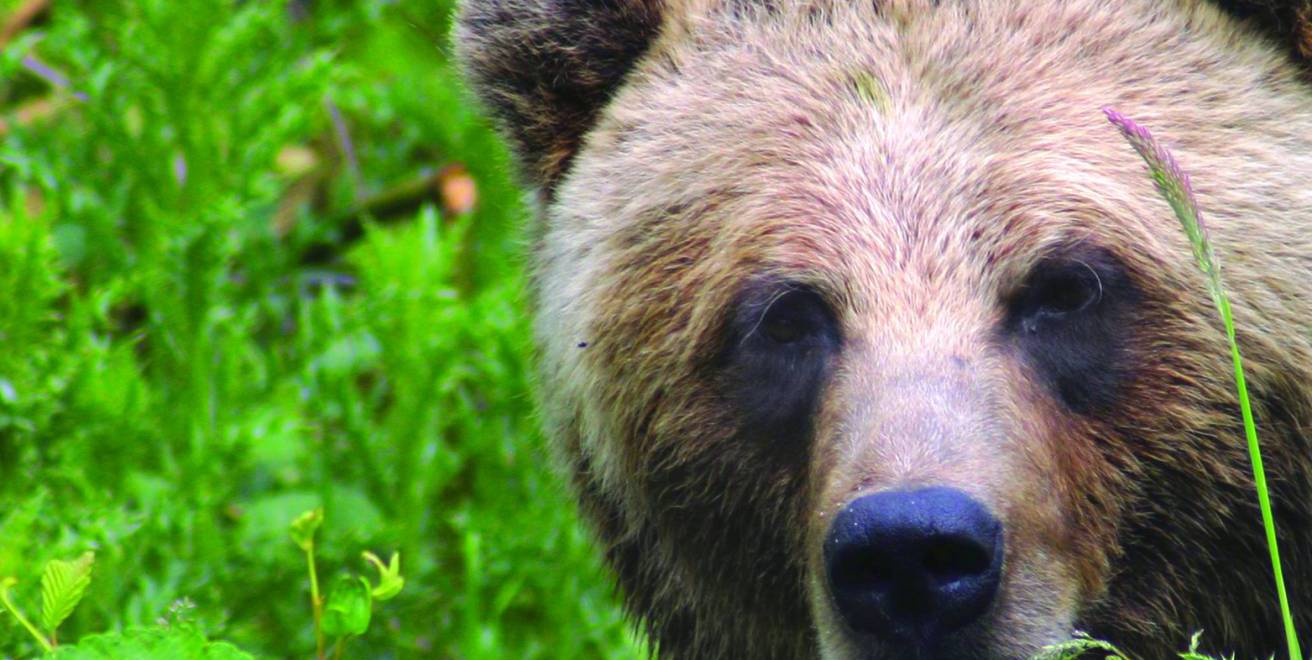Fall is my favourite time of year – harvest season is in full swing and root cellars are being stocked for the winter, our communities and the alpine come alive with the golden shimmer of the larch trees, the rivers run red with Kokanee and thoughts of winter start dancing in my head. It’s an incredibly rich time of year. We are blessed here in the Columbia Basin to share our homes with grizzly bears and black bears, but unfortunately, fall is a time of year when conflict between us can increase. Just as I’m out in my garden harvesting for the coming winter and feasting on the bountiful produce, so too are bears out there looking to feast and fatten up for the coming winter hibernation.
Living with wildlife is a gift, but with it comes a large responsibility to co-exist in a way that allows for the long-term sustainability of these incredible creatures and minimizes the possibility of human safety concerns. Managing attractants on our properties – whether in town or in the country – is critical to minimizing the bears’ desire to come to human settlements seeking a good meal. A new study released last week identified the Elk Valley as an “ecological trap” for grizzly bears—the rich berry crops of the region coupled with human settlements and human-induced rapid ecological change results in significantly higher mortality grizzly bear mortality rates. In the last month alone, there have been 5 non-hunt grizzly bear mortalities in the Elk Valley – in other words, in these 5 instances, coexistence didn’t work.
Nineteen black bears have been killed so far in Revelstoke this year. I can remember a fall when we killed 28 bears in Kimberley. I say we, because while you and I didn’t have to face the challenging and complex decision that the Conservation Officer Service had to make each and every time they pulled that trigger, our collective actions as a community contributed hugely to the tragic killing of the bears.
Living with wildlife is complex, but hey, most things are. We live in a world of nuance and shades of grey. We have made significant progress over the years as communities, bringing in bear-proof garbage cans, running Bear Aware programs, switching to transfer stations instead of dumps, which were huge mortality sinks for bears, picking our fruit trees before they fall on the ground and rot, and increasing the use of electric fences on private properties around chicken coops, pigs, composts and bee hives. But this year’s bear mortality shows that we have a long way to go to reduce our impact on the bear population and coexist better with our wildlife populations.

There are a lot of easy steps we can all take to better coexist with wildlife in our communities. We’ve all heard the saying – a fed bear is a dead bear – once they’re habituated, there’s likely a dead bear in the future.
- Store garbage in a locked and inaccessible storage shed, garage or basement and don’t put it out until the morning of your garbage pick-up. If you’re out and about, put your garbage in a bear-proof bin, not an easily opened garbage can.
- If you compost, actively manage your compost to minimize bear-enticing odours. In the fall, consider taking a break from outdoor composting your food scraps – I store mine in a garbage can in the garage until the bears have gone to sleep.
- If you have fruit trees, pick your fruit before it falls off the tree. A few of our Wildsight Branches have apple presses, dehydrators, ladders and other equipment to help you harvest your fruit and turn it into juice, sauce or dried fruit. These are free for community use – access these resources here.
- If you have bees, chickens or other contained farm animals, use an electric fence to deter bears.
- Always carry bear spray when you’re walking in bear country.
- Tell the government that we need to increase the resources and capacity of our Conservation Officer Service.


